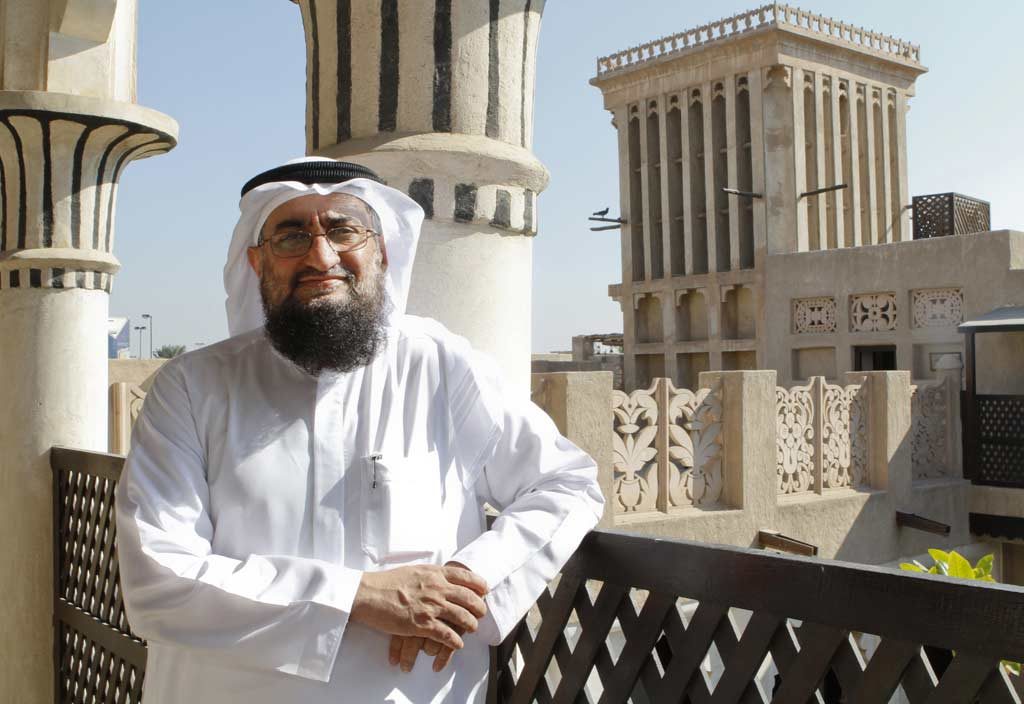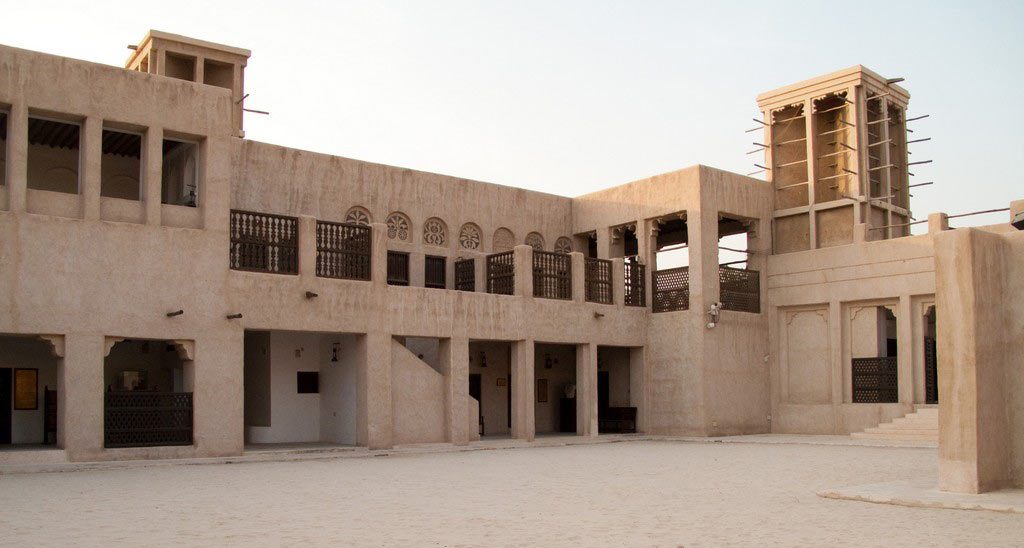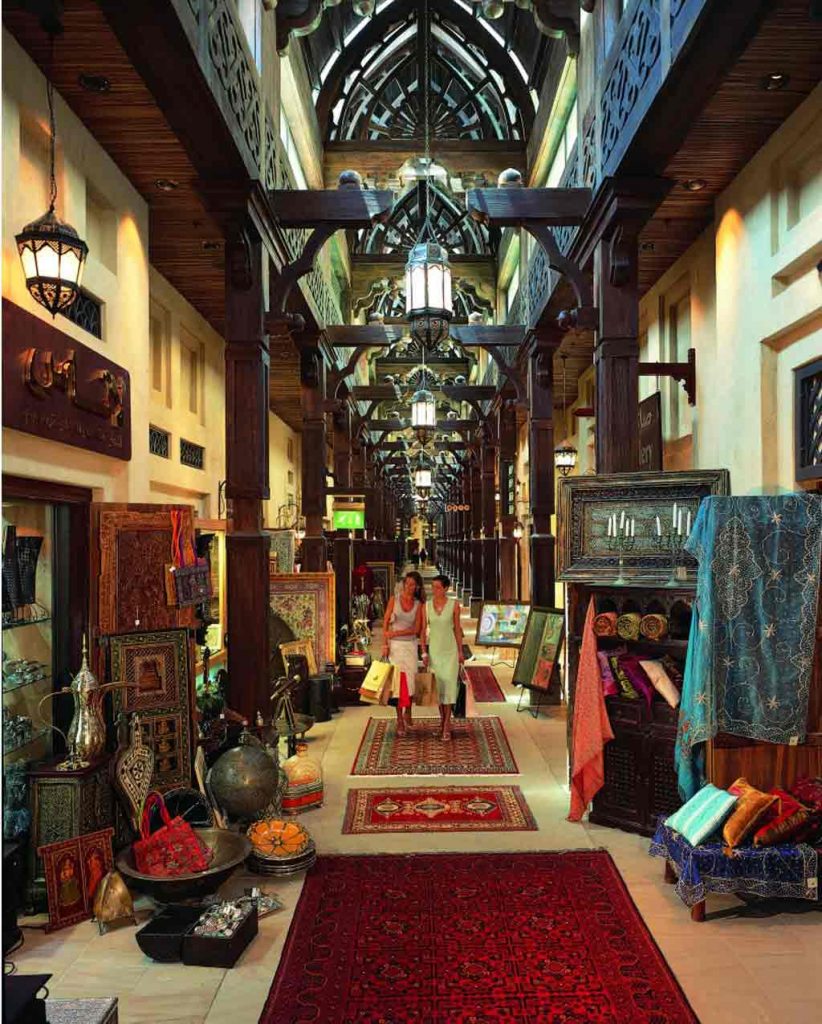Mr. Rashad Mohamed Bukash is the CEO of Architectural Heritage and Antiquities Department, Dubai Municipality. He completed his Bachelors in Architecture from Syracuse University, New York and has a Masters in the field of Conservation of Architectural Heritage from Manchester University, UK.
He has been working with Dubai Municipality since 1987. During his time there he started establishing the Architectural Heritage Unit and in 1995 it became a separate section within the Municipality. In 2008 he was appointed as the director of the Architectural Heritage Department.
As per a request from His Highness Sheikh Mohammed Bin Rashid Al Maktoum, Antiquities (or Archeology) was recently added to the department.
We had a chance to speak to him about his work and views about architecture in Dubai:

1. Tell us little bit about the work done by Architectural Heritage and Antiquities Department.
When it comes to building architecture, the major role of the Architectural Heritage and Antiquities Department is the evaluation and restoration of heritage buildings. The first project we worked on was the Sheikh Saeed Al Maktoum House. For us any building that passes 40 years is evaluated. Every structure is graded as per the evaluation into 4 categories – Grade A, Grade B, Grade C and Grade D. Depending on the outcome, a decision is made as to demolish, protect or restore it.
We have a total of about 712 historic building in Dubai and we have restored about 315 of them. We have a plan to finish the restoring the remaining buildings by 2020.
Once a decision about restoration is confirmed, the first step is to survey and record everything that currently exists. Next we interview people who used to live and interact with the building to understand how they used every room and space within in. We want to understand all aspects of their life and interaction with the building. We also collect aerial photographs and conduct detailed survey for a better understanding of the foundation of the structure.
After completing these initial studies, we can now decide which part of the building needs to be restored. We try to come as close as restoring it to its original form based on our studies and interviews.
We even use the same material as the original buildings – coral stone, gypsum, mud etc. Everything is carried out exactly according to the rules of UNESCO and World Heritage Center. This process takes between 1 – 1.5 years.
We also decide the use of the building after restoration – whether it’s going to be a hotel, museum, mosque, market place etc. This also affects how the building is restored. After this we commit to a periodic maintenance program of the building.

2. Please elaborate on the submission of the historic area as UNESCO World Heritage Site.
The entire historic area in Dubai – Al Fahidi, Shindagha, Al Ras, Bur Dubai is covered in the proposal submitted to UNESCO.
We have submitted our proposal at the end of January of this year. The team from UNESCO will be visiting us later this year in October for an examination of the submitted documents and the site.
In June 2017, our proposal will be evaluated and we will receive a decision about the outcome.
3. What place do you think vernacular concepts have in architecture today?
There are many modern buildings that have been inspired from traditional architecture.
For example, Madinat Jumeirah has captured the aesthetics of a traditional market place. Also, Jumeirah Road is required to have the road facing façade of all villas to be designed with traditional elements as per a new regulation by Dubai Municipality.
Similarly, buildings in Al Jadaf are also required to have a traditional façade. Architects are increasingly trying to use these features in modern buildings. We have published two books that describe the elements of heritage architecture to make it easier for architects to apply it to their work.
Apart from aesthetics, there are many emerging ideas among architects nowadays to incorporate features of vernacular architecture in modern buildings. Villas nowadays are being designed with a courtyard in the center, or in a U or C shape. Traditional architecture took 1000 years to get to where it was; modern architecture is just 50 years old. As we progress we will learn to incorporate those features to the best use.

4. What do you think is the relationship between the past and present in architecture?
I think it’s important for us to recognize traditional features of building design like passive cooling, natural ventilation and suitable material and adapt it to modern architecture. We should understand the philosophy of it and its capability of dealing with climate.
I believe that if we properly understand and implement it, you probably won’t need to switch on your air conditioning for 6 months of the year in a villa. In towers we can easily apply the concept of cross ventilation for enhancement.
5. What do you think is the biggest challenge that architects face today when it comes to designing for environmental sustainability?
Firstly, architects need to understand the principles of vernacular architecture of any place that they are practicing in. They need to study the climate and know how to deal with it.
Culture is also very important, because it affects the way internal spaces are designed. For example, it is very common to provide different rooms for men and women in Islamic culture.
So the challenge is to create a space that people want to be in while incorporating aspects that are suitable to the climate, culture and modern context.
6. What do you think are some aspects of cultural or heritage architecture missing from modern public spaces nowadays?
There are a lot of things missing in modern public spaces. Nowadays malls and coffee shops have become the gathering place for people. Some places have plazas that are becoming gathering places in the winter.
Changing lifestyle and needs of people should also be taken into consideration. It is inevitable that changing trends will also reflect in architecture and public spaces.
However, the modern city should try to have more open plazas for people to gather that should support activity. This will be a link to the historic architecture of Dubai. Al Fahidi area has already started incorporating these features.
We are developing the historic city so that people will want to visit it along with visiting iconic structures like the Burj Khalifa.
In 2015, we had more than 3 million tourists coming to the historic area.
So we are working on improving the area to increase awareness about heritage and cultural aspects of Dubai. Our biggest project is in the Shindagha area where we will be developing 50 buildings to showcase different things –perfume trading, coins museum, fishing, pearl diving, archeology, cultural center.
7. Currently, what is your favorite place in Dubai?
I love the Al Fahidi historic area. My office is there and I even used to live there. If I don’t go there for 2-3 days I feel like my soul will pull me back there.







![Social alienation is a sharp tactic in the toolkit of domination [although, here it is the extension of female subordination]. Photo by Hans Van Den Berg/ flickr.com](https://b-change.me/wp-content/uploads/2018/01/1sTnAkZgJEx1Yb6fctMyVuA-570x300.jpeg)



